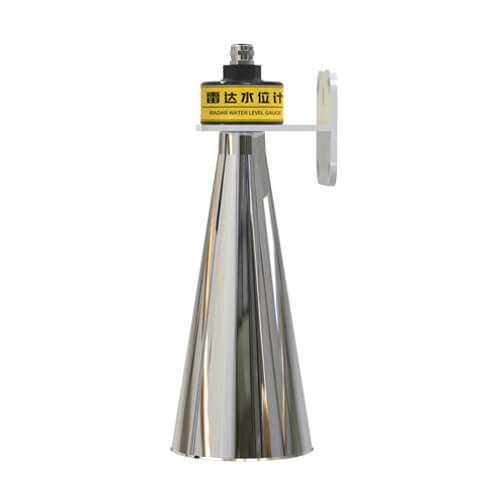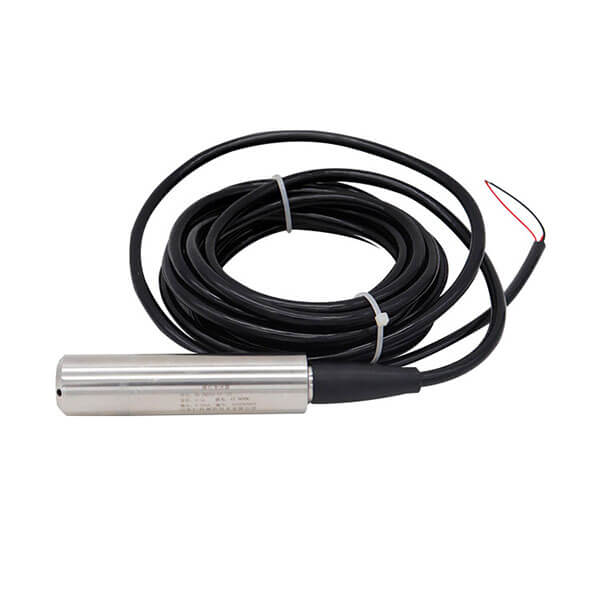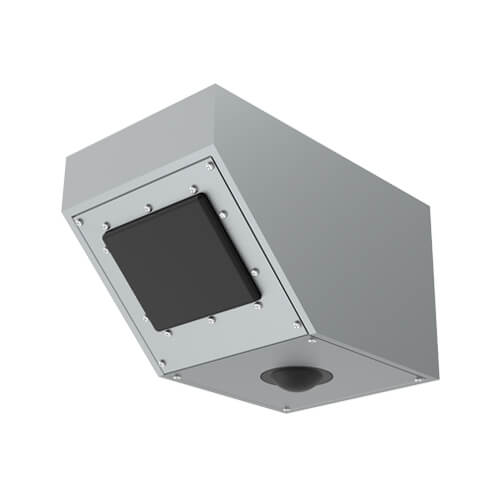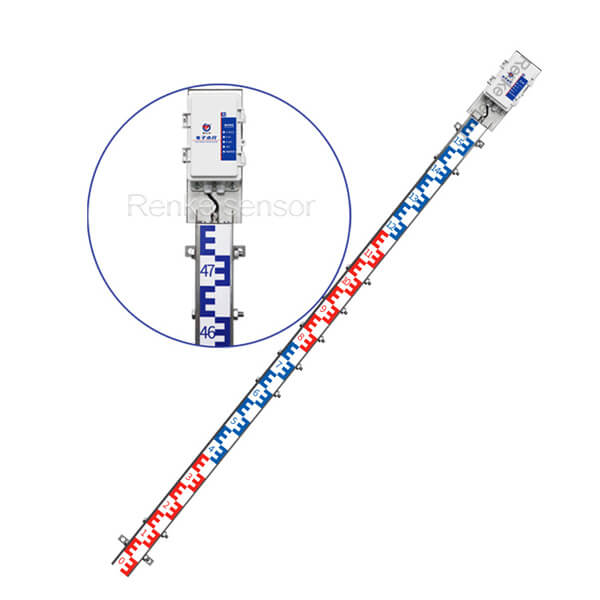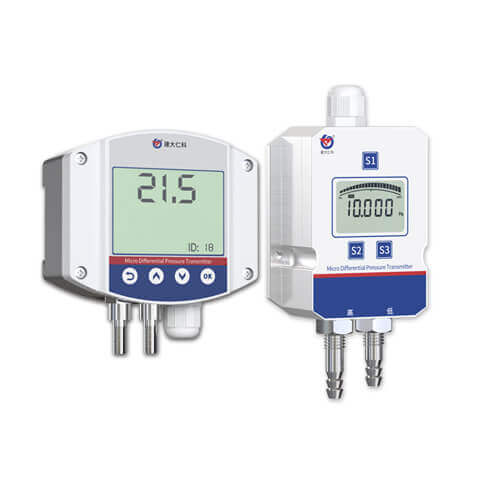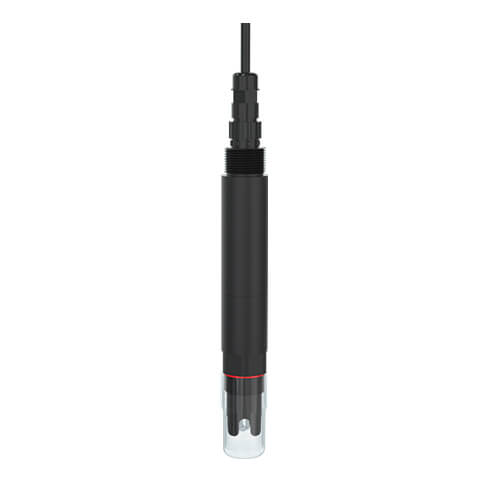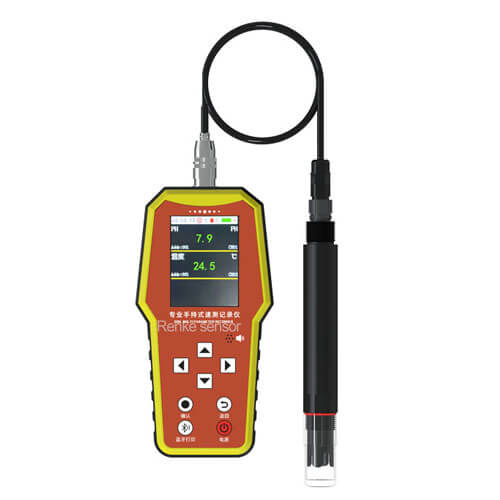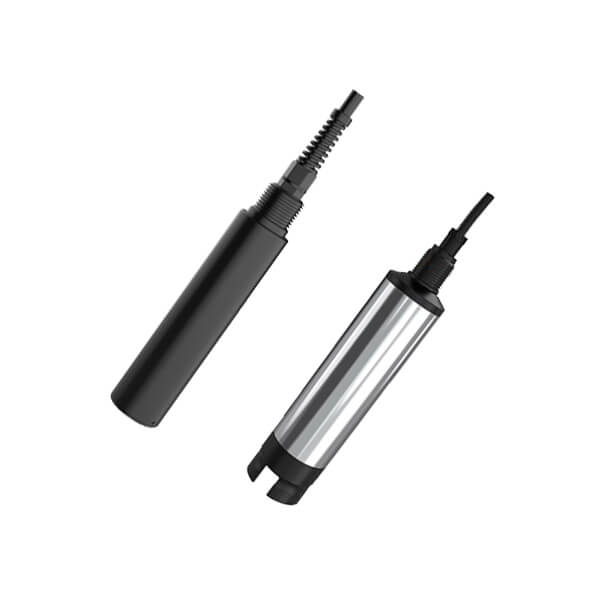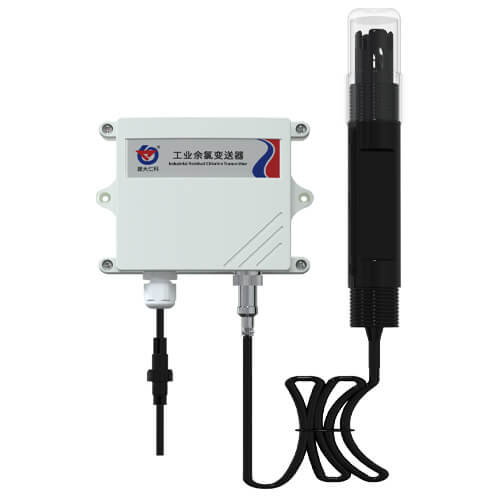Table of Contents What are wireless sensors? Wireless sensors are miniature electronic devices that integrate sensing, data processing, and wireless communication functions. They are capable
Radar Level Sensor
The RS-RAD-N01-1-EX is a compact radar level sensor that uses non-contact measurement technology. With no moving parts, it offers stable operation and low maintenance, making it an ideal choice for industrial and commercial liquid measurements. By emitting electromagnetic waves to irradiate the target and receiving the echoes, it calculates the distance from the liquid surface to the wave emission point, along with information such as the rate of distance change (radial velocity), azimuth, and height.
- Model: RS-RAD-N01-1-EX
- MOQ: 1 PCS
- Delivery date: within 24 hours
- Price:$167.7
About Radar Level Sensor
A radar water level meter refers to a radar product that utilizes 76-81 GHz Frequency Modulated Continuous Wave (FMCW) technology. Our radar water level meter offers a maximum range of up to 70 meters, with a blind zone of less than 10 cm. Thanks to its higher operating frequency and wider bandwidth, it provides greater measurement accuracy. For user convenience, we offer fixed mounting brackets that can be used in combination with our rainfall monitoring station’s poles and main unit. Our radar level meter is unaffected by media and environmental factors, providing accurate and reliable data.

Our radar level sensor features
1. Renke’s radar level meter is based on the self-developed CMOS millimeter wave RF chip, which realizes a more compact RF architecture and a higher signal-to-noise ratio, thus achieving the smallest blind spot.
2. The working bandwidth is large, which enables the product to have higher measurement resolution and measurement accuracy.
3. The narrowest 6° antenna beam angle, the interference in the installation environment has less impact on the level meter, and the installation is more convenient.
4. The integrated lens design is compact and easy to install.
5. Low power consumption and long life.
6. Renke is a professional manufacturer of environmental monitoring equipment with 15 years of production and R&D experience. Our water quality sensors, weather sensors, level sensors and flow meters have ISO9001, CE, RoHS and FCC certifications. At present, Renke brand overseas market is constantly expanding and is your excellent choice.
Our radar level sensor datasheets
| Power supply | DC10-30V |
|---|---|
| Max. power consumption | 0.2W |
| Transmitting frequency | 76GHz~81GHz |
| Measure range | 0.1 m ~65m |
| Accuracy | ±1mm |
| Beam angle | 6° |
| Working environment | -40℃~+80℃, 0%RH~95%RH (non-condensing) |
| Signal output | RS485 |
| Protection level | IP67 |
Applications
The radar level transmitter is used for non-contact measurement of liquids or slurries. It is suitable for environments with significant temperature and pressure variations, as well as the presence of inert gases and volatile substances. Utilizing Frequency Modulated Continuous Wave (FMCW) technology, it operates reliably within the industrial frequency band range. With low beam energy, it can be installed in various metal and non-metal containers or pipelines without causing any harm to humans or the environment.
Radar Level Sensor Installation
Installation requirements
During installation, it is essential to ensure that the instrument is perpendicular to the water surface and to avoid the radar beam being directed at obstructions that may cause false echoes. The specific requirements are as follows:
1. Ensure that the radar level sensor is installed perpendicular to the water surface. Any tilt may weaken the received signal amplitude, affecting accurate distance measurement.
2. Ensure that there are no obstructions within the beam range, such as riverbanks or other nearby structures.
Wiring requirements
Our radar water level sensor supports a wide voltage input range of 10–30V. When wiring the 485 signal lines, ensure that the A/B lines are not reversed, and that the device addresses on the bus do not conflict with each other. Serial port parameters: RS485, baud rate – 9600, data bits – 8, stop bits – 1, parity – none. The power supply voltage should be within the 10V–30V range, with a recommended 12V supply. For wiring, follow the color coding: red — VCC, black — GND, green — 485A, yellow — 485B.

Installation requirements
| Encoding | 8-bit binary |
|---|---|
| Data bits | 8 bits |
| Parity bit | None |
| Stop bit | 1 bit |
| Error check | CRC (redundant cyclic code) |
| Baud rate | 9600 bit/s |
Radar Level Sensor FAQs
1. How does a radar level sensor work?
The working principle of the radar level sensor is that the probe emits radar pulses, and when the pulses encounter the surface of the material, they are reflected back and received by the receiver in the meter. The distance between the transmitter and the surface of the measured medium is proportional to the propagation time of the pulses in between, and the liquid level height is calculated.
2. Radar level sensor advantages and disadvantages
Advantages:
Using the principle of microwave reflection, it has strong anti-interference ability
Automatically and continuously monitors the changes in water level without manual operation
No mechanical wear, non-contact measurement, easy maintenance
The measurement process is independent of water quality and is not affected by floating objects such as floating ice
No wave-breaking well is required, and it has no effect on the water flow
Solar power supply
No complex installation process is required, and it will not affect the surrounding environment
Low cost and long life
Disadvantages:
Liquid overflow and liquid foam will interfere with the measurement of the radar level meter
There must be no obstacles in the measurement area
The deviation of the installation angle will affect the accuracy of the measurement results
3. What are the components of a radar level transmitter?
The specific uses and structures of various radar water level sensors are different, but the basic forms are the same, including: transmitter, transmitting antenna, receiver, receiving antenna, processing part and display. There are also auxiliary equipment such as power supply equipment, data recording equipment, anti-interference equipment, etc.
4. What are the application areas of radar level sensor?
- Automatic monitoring of river water level and open channel water level
- Reservoir dam front and dam tailwater level monitoring
- Pressure regulating tower (well) water level monitoring
- Automatic tidal level monitoring system, urban water supply, sewage level monitoring system
5. Radar vs Ultrasonic level sensor
- Working Principle: The radar level meter measures using electromagnetic waves, while the ultrasonic level meter operates based on sound wave principles.
- Application Scenarios: The radar level meter is suitable for environments with high temperatures, high pressure, vacuum conditions, or high steam levels and requires certain dielectric properties of the medium. The ultrasonic level meter is suitable for atmospheric pressure environments, with the probe unable to withstand high temperatures, typically not exceeding 100°C. Additionally, the temperature and pressure of the medium affect the speed of ultrasonic waves.
- Measurement Range: Some radar level meters on the market offer a range of 0-100 meters, whereas ultrasonic level meters can only meet a range of 0-30 meters.
- Measurement Accuracy: The accuracy of radar level meters is significantly higher than that of ultrasonic level meters, typically reaching millimeter-level precision. The measurement accuracy of ultrasonic level meters may be affected by medium characteristics such as viscosity and density.
- Price: Radar level meters are generally more expensive than ultrasonic level meters.
6. How to maintain the radar level sensor?
The radar level sensor has no moving parts, resulting in minimal faults during use. Occasionally, volatile organic substances in the storage tank may crystallize on the horn or antenna of the radar level meter, which can be resolved by regular inspection and cleaning.
For routine maintenance, a PC can be used to remotely monitor the reflected wave curve. If new interference waves appear, the level meter’s false wave recognition function can be utilized to eliminate their impact, ensuring accurate measurement.
7. What's in the packing list?
Radar water level sensor*1
T-flange mounting bracket
Certificate of conformity, warranty card, wiring manual, etc.
Mounting screws
8. How to obtain the manual?
Please contact us to obtain the manual.
Related Blogs
Table of Contents Water leak detection is designed to detect and repair leaks in pipes, equipment or building structures in a timely manner to prevent
Long-term rainfall and melting snow have raised water levels and flooded city roads, causing flooding. Frequent and extreme flooding is inevitable and endangers community safety.
Natural disasters such as floods and heavy rains pose threats to lives and property around the world. Without a proper flood monitoring system, these natural
Table of Contents Water is the source of life, integral to every aspect of human production and daily living. In many scenarios, ensuring health and
Table of Contents Have you or your friend experienced a broken water pipe, water accumulation in the kitchen or bathroom? Water is the most common
Table of Contents What is a water level sensor? The water level sensor is a device that measures the liquid level in a fixed container

